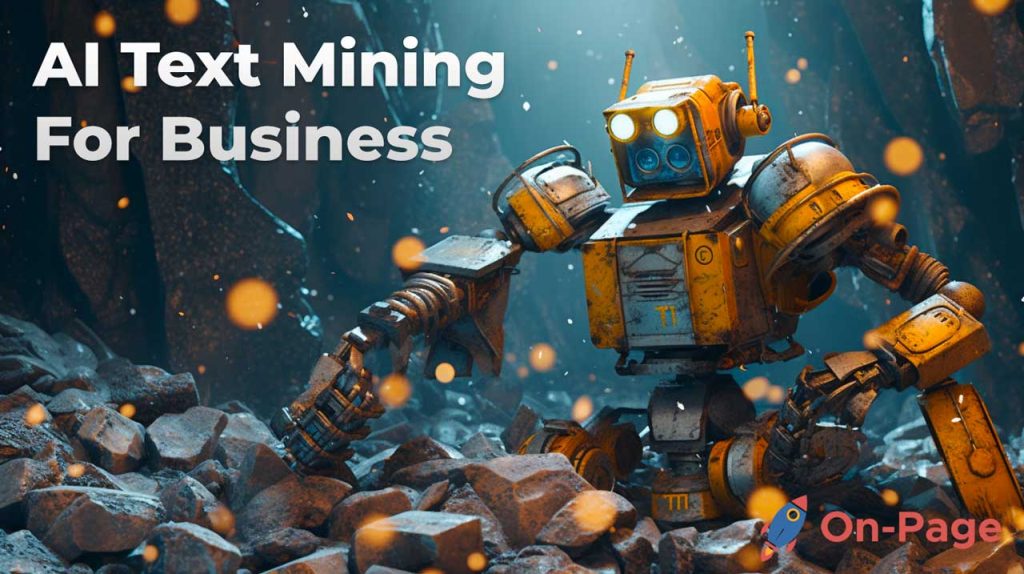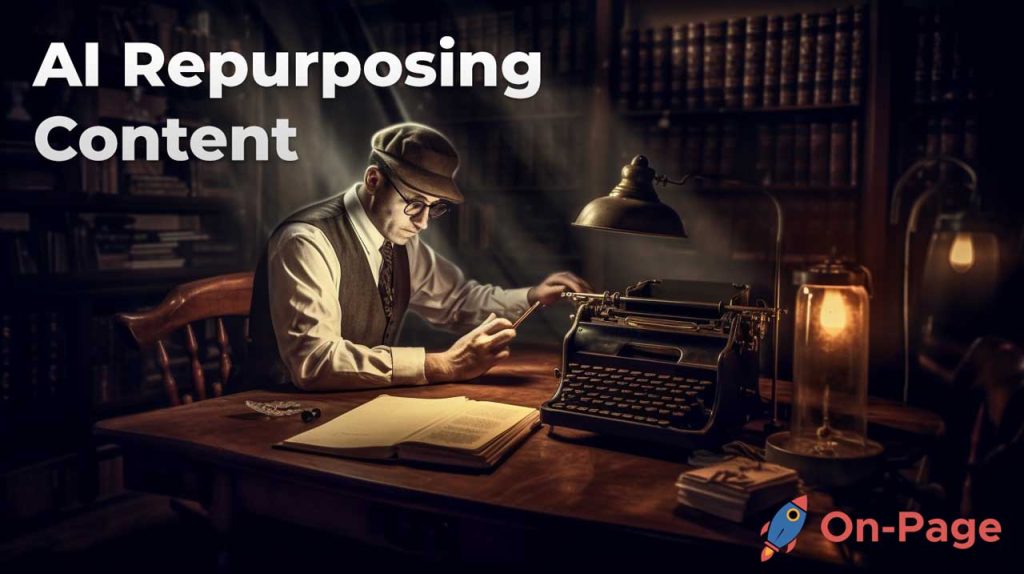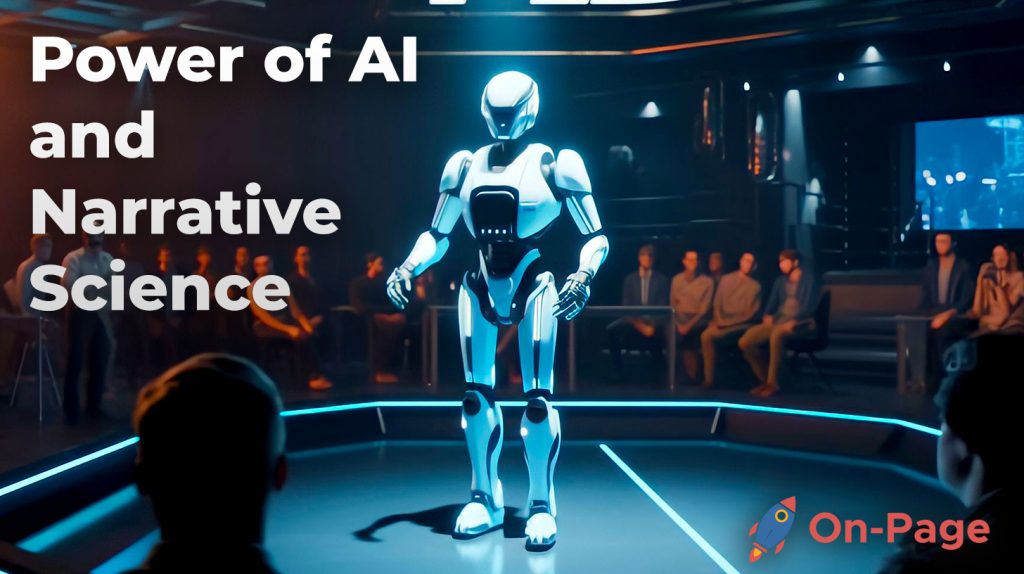Imagine a world where your thoughts transform into perfectly written essays without breaking a sweat or even lifting a finger. Gone are the late-night struggles of organizing and structuring your ideas to meet deadlines, and welcome to the future: AI-powered essay writing! With cutting-edge advancements in artificial intelligence, we now stand at the threshold of an era that is revolutionizing how we weave words into meaningful narratives. Let’s delve into this intriguing realm where human intellect meets machine learning to forever change the way we write.
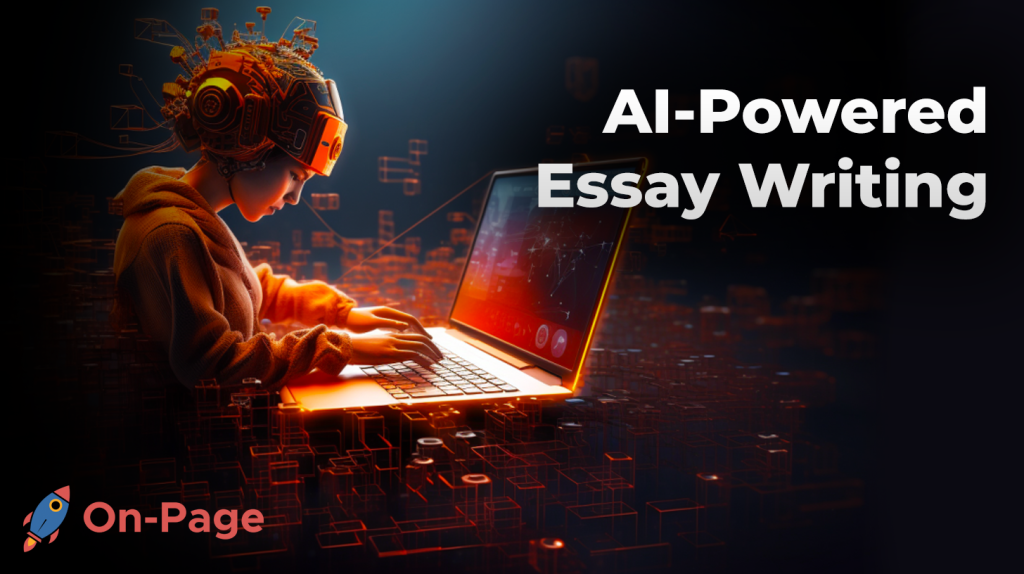
AI has revolutionized essay writing by providing tools for generating ideas, finding sources, and even writing content. By leveraging AI technology and tools like On-Page.ai, students and professionals alike can produce unique, high-quality essays with greater ease and efficiency than ever before. However, it is worth noting that while AI can support the writing process, nothing can replace human creativity or critical thinking.
AI-Powered Writing Tools Explained
AI-powered writing tools, such as Stealth Writer are transforming the way we write, making it faster and easier for people to create high-quality content. These tools leverage advanced AI algorithms to provide unique features that enable writers to get their work done quickly and efficiently. The best part about these tools is that they offer personalized services according to your particular needs and preferences. Let’s dive deeper into how these AI-powered tools work.
One of the most popular AI-powered writing tools is Textio, which uses natural language processing (NLP) techniques to help people write better emails, blog posts, and other types of content. It provides an interface that allows users to input content and instantly receive feedback on the tone, clarity, and impact of what they have written. Textio’s algorithm frequently updates itself with new data stored from public text sources such as news articles and academic papers, which means that its predictions are always based on the latest information.
Another exemplary tool is Grammarly, a platform that examines your writing for spelling and grammar errors and contextual mistakes by using machine learning technology. Grammarly can improve the readability of your documents by suggesting synonyms to reduce wordiness or rearrange sentences for better flow. It also offers personalization by analyzing your writing habits and providing feedback tailored to your style.
Stealth Writer is another excellent choice for writing essays and other types of content–and for every topic you can imagine. It can also accurately spot grammar and spelling errors. It’s such a great AI writing assistant for any newbie or expert author to have.
But despite the benefits of these technologies, some critics argue that relying on AI-powered writing tools can lead to intellectual laziness since it takes away from engaging in actual critical thinking processes. However, proponents argue that these tools boost productivity while still preserving space for creativity in the writing process.
Think of AI-powered writing tools like having a personal editor at your disposal — saving you time while providing valuable insights into improving your work.
Now that we’ve seen why you should consider using AI in your writing, let’s move on to how AI generates content.
How AI Generates Content
AI-powered writing tools employ NLP, machine learning, and deep learning techniques to generate content. By utilizing these technologies, AI can mimic human thinking and provide highly accurate responses.
One such tool is Articoolo, which uses NLP algorithms to create unique articles by scanning multiple sources online for information related to the topic provided. After identifying relevant and reliable sources, it compiles a summary of the gathered information and constructs an article based on its relevance and importance in a matter of minutes.
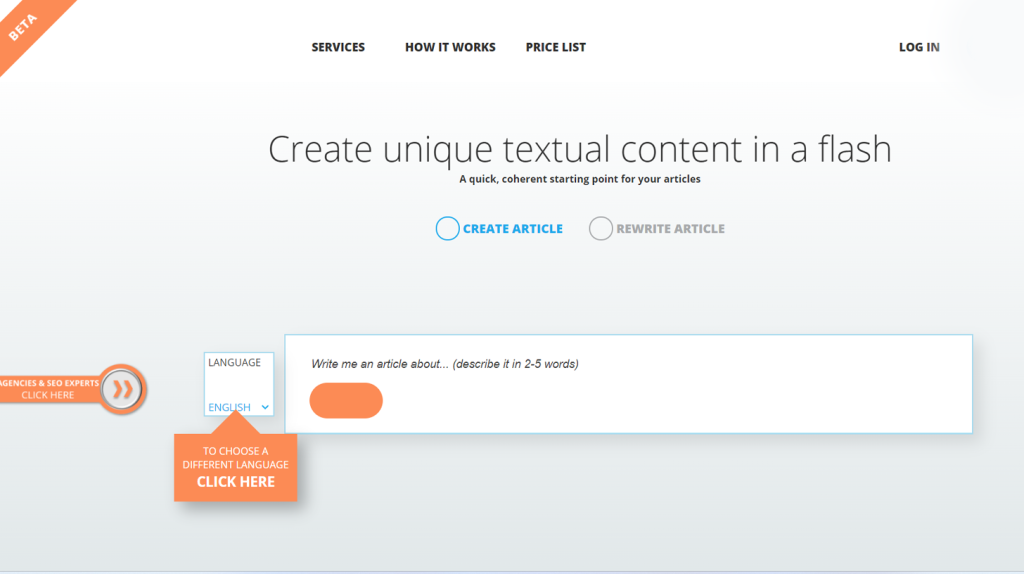
Another tool that uses machine learning is Wordsmith. This platform utilizes data to instantly turn structured data into complete narratives or reports of various kinds with virtually limitless variations. These narratives can be customized according to user preferences and specifications.
Some may argue that relying solely on AI-generated content will compromise the uniqueness of the text produced as it might not always capture the author’s voice flawlessly. However, others contend that AI-generated content saves time in producing original documents with high accuracy rates.
Tool Examples and Functions
There are several AI-powered writing tools available on the market today, each with its own set of unique functions and features. Let’s take a closer look at some of the top tools and what they have to offer.
1. Textio
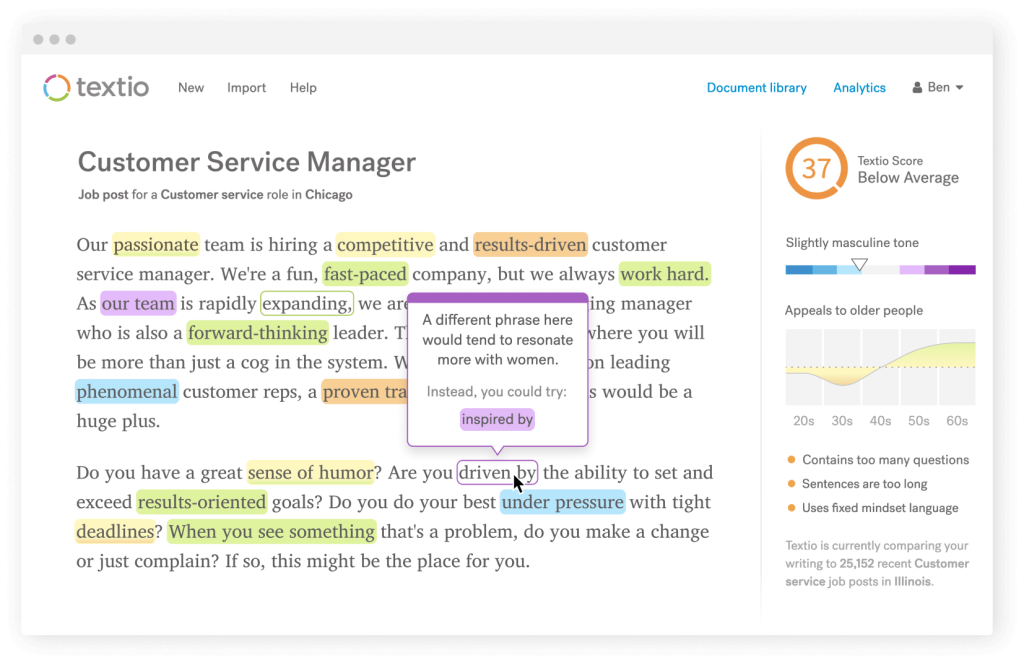
This tool uses artificial intelligence to help individuals and businesses improve their writing by assessing language patterns that lead to negative response rates. Textio suggests improvements to increase inclusion, clarity, and instrumentality in your writing.
2. QuillBot
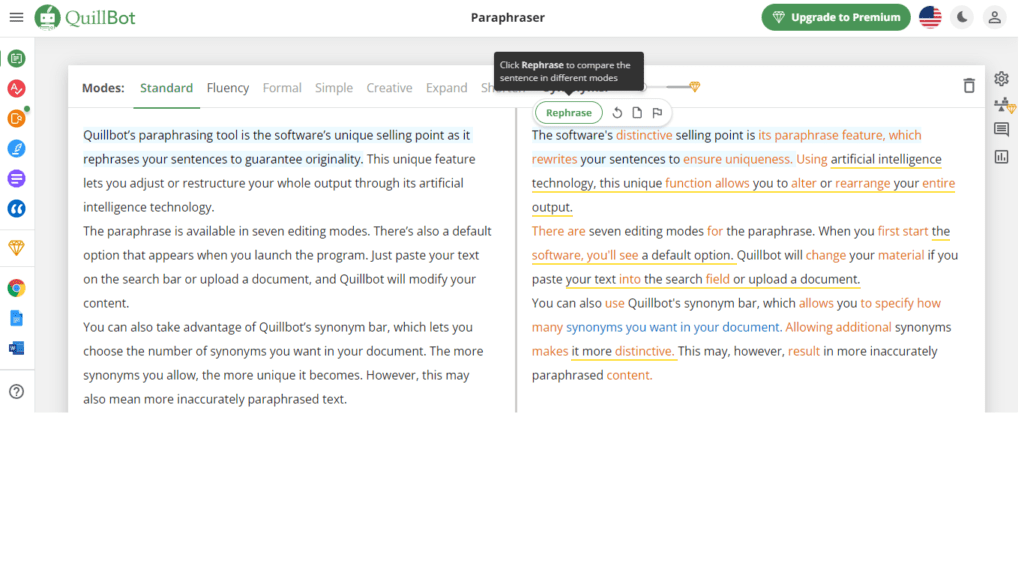
This tool offers users a variety of writing modes, such as a thesaurus, synonyms, grammar check, tone detection, and an AI writer. The AI writer outputs suggested rephrased sentences based on text or keywords given by the user.
3. AI Writer
A web application that generates full articles powered by AI in seconds has proven an invaluable resource for content marketers. With this tool, users can generate articles from an idea for use on their blog or website without spending time researching or writing full articles themselves.
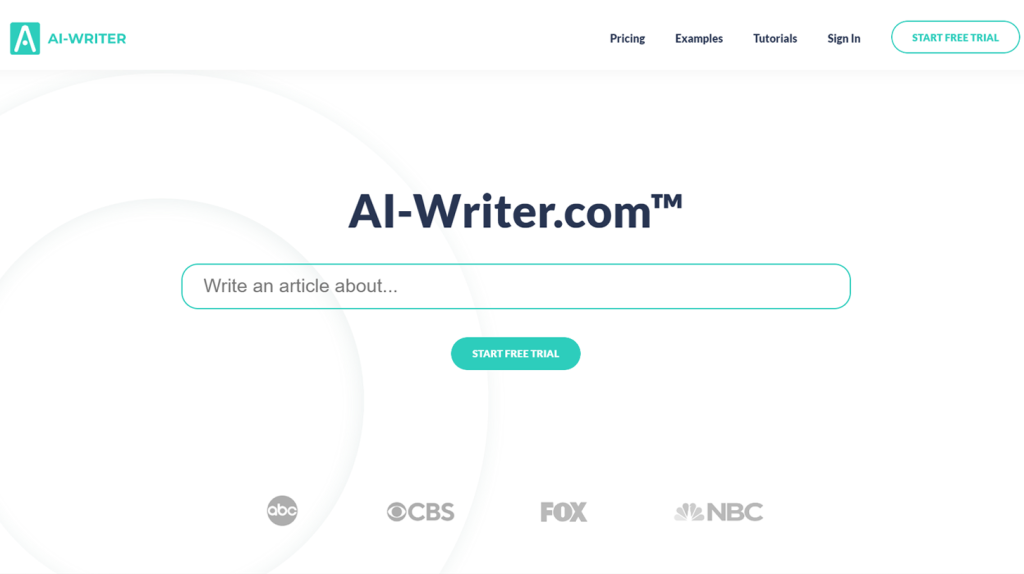
4. Grammarly
Perhaps one of the most popular AI-powered writing tools on the market currently. Grammarly is an all-purpose spelling and grammar checker that also provides suggestions in real-time while typing.
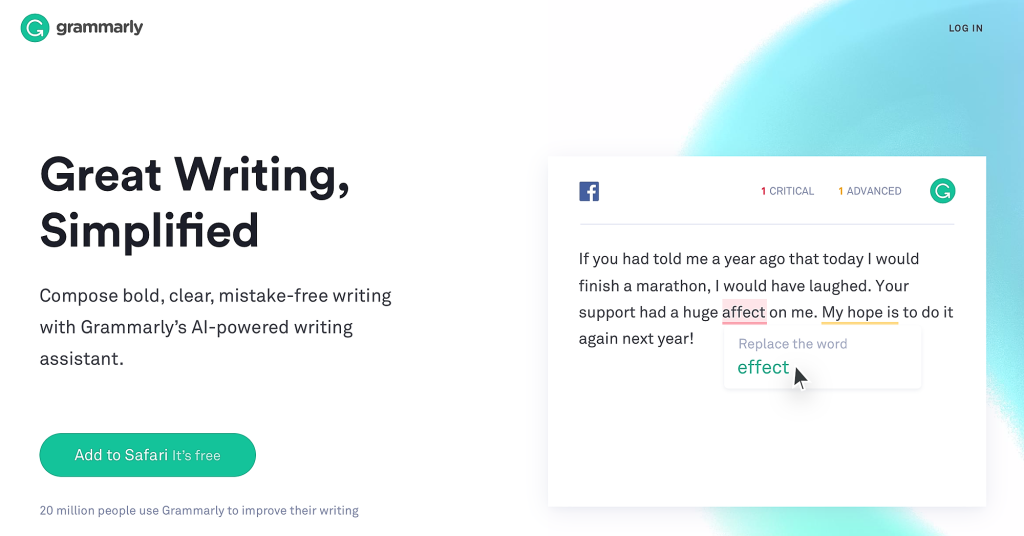
5. Wordhound
This tool helps writers identify redundancies or repetitiveness by analyzing sentences and looking at them as a group instead of just listing them alphabetically.

6. Conversion.ai
This is another fantastic example of how AI is changing the world of writing with its arsenal of powerful features like long-form assistant, perfect headline feature as well as a range of templates to choose from.
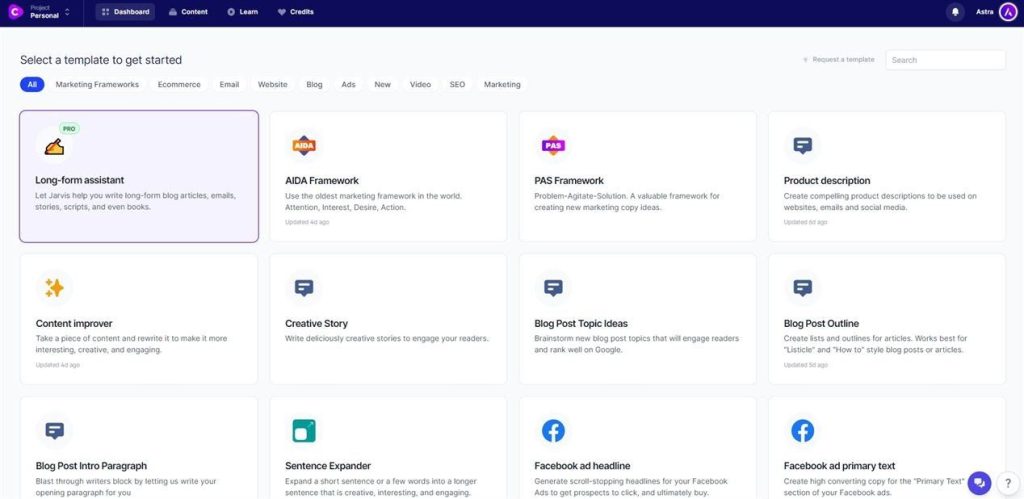
7. On-Page.ai
On-Page.ai offers a ton of AI-driven writing features that allow writers to create top-notch essays, blog articles, and many other types of content. They can take advantage of Stealth AI Writer and Stealth ReWriter tools to meet their specific writing needs and preferences.
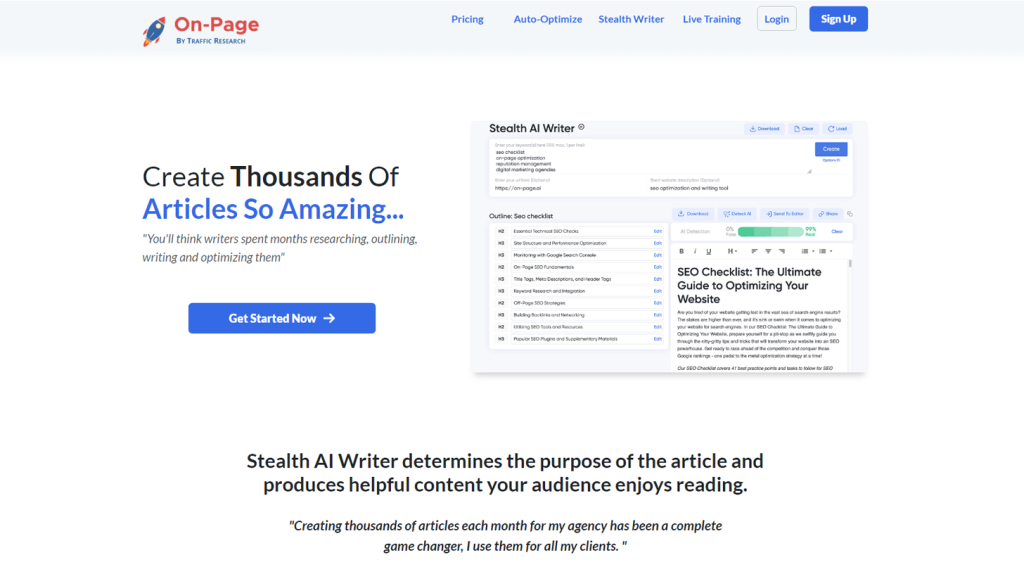
These AI-powered tools offer substantial value when it comes to generating high-class content without investing hours in research or manually crafting every sentence one at a time. In essence, these tools bring innovation to a process that has long been tedious allowing writers more time to focus on other important tasks of content creation.
The AI-powered tools are designed in such a way that they are easy to use, intuitive, and user-friendly; you don’t need any technical knowledge or understanding to get started, making them accessible to writers at any skill level.
However, there are some debates surrounding the usage of these tools and whether or not they might replace human creativity and ingenuity. Indeed, there is a concern that AI-powered writing could create a homogenized and monotonous approach to creating articles. But the truth is that while AI can provide suggestions, it can’t modulate data or research with intuition and subjective judgment like human beings.
It’s like having a GPS in your car -it tells you where to turn and how far away your destination is based on inputted data- but it won’t tell you about the restaurants with “the best burgers” or about that breathtaking view that’s only 10 miles off course.
Now that we’ve taken an overview of the various AI-powered writing tools available, let’s dive into why utilizing this software and technology is beneficial for writers of all levels.
- According to a study by McKinsey Global Institute, by 2030, AI-powered writing tools are expected to automate approximately 15% of all digital content creation.
- A research paper published in 2020 mentioned that around 60% of college students reported using some form of AI-based writing assistance during their academic journey.
- A survey conducted in 2022 found that more than 75% of educators believe that AI will transform the landscape of essay writing and assessment within the next decade.
Benefits of AI in Essay Writing
A cool benefit of using AI-powered writing tools is that it helps writers overcome writer’s block by providing ideas when they need them most. This has basically eliminated the difficulty many encounter when attempting to maintain their train of thought as they write with nothing but a blank screen in front of them.

Furthermore, an AI has extensive access to news portals, academic research papers and other publications, which researchers can use to support the ideas presented in their work. This signifies that AI-powered tools like On-Page are valuable, as they analyze and summarize vast amounts of information faster and more accurately than human beings could ever dream of within the same time frame.
All these sources are not unlike individual puzzle pieces, but designing a coherent essay required placing each part in a way where they aren’t simply crammed together. AI technology acts as the glue that holds all these parts together ensuring that there is some cohesion and flow to derive maximum points from your writing project.
Besides the above-stated benefits, utilizing AI-powered writing tools aids in creating superior content with speed and accuracy beyond imagination while reducing the risk of errors like typos or grammar mistakes. Thanks to AI writing platforms like Stealth Writer, writers need not worry about glaring grammar errors and missed typos.
Numerous studies have backed up this claim stating that using these tools gives writers better results more quickly than even seasoned industry professionals who might take hours upon hours crafting some pieces robbing you of valuable time instead.
Imagine having a personal assistant who is always available 24×7 for you whenever you need them; providing high-quality feedback on every draft you submit! You’d have all the necessary feedback you need to successfully complete your projects at hand without worrying about costly mistakes or missing deadlines.
Overcoming Writer’s Block
Writer’s block can be a frustrating and time-consuming experience for anyone who relies on writing to pay the bills. Some may stare at an empty page for hours, hoping that inspiration will strike while others may use other strategies such as brainstorming, free-writing, or simply taking a break from work. However, what if you could rely on AI-powered writing tools to help you overcome writer’s block? Tools such as Textero.ai and On-Page.ai offer unique solutions that have been helping writers overcome writer’s block in various fields.
Another benefit of AI-powered writing tools, particularly for On-Page.ai, is the topical keyword search feature. It enables users to provide the title of their essay along with supporting keyword phrases or questions related to the topic they are writing about. On-Page content optimization tool then generates a list of topics and ideas using sophisticated algorithms that scour databases across the internet for relevant information. Quite handy if you just need a quick prompt and a spark of inspiration.
Comparing the use of AI-powered writing tools and overcoming writer’s block with basic everyday tasks is an effective way to fully understand the potential benefits. Just like how you can trust your car GPS to guide you to the best route, or your phone’s autocorrect feature to aid in text messaging conversations, you can trust AI-powered writing tools to provide the foundational structure for written work. These tools are designed to facilitate better writing experiences, not replace them.
Challenges and Limitations
AI-powered essay writing definitely has some advantages but it still needs to overcome several challenges and limitations. One primary constraint is that AI can’t understand the nuances of language. Today’s technology is not capable of producing content that could match the complexity of human thought processes.
For example, AI engines can easily be thrown off by homophones, idioms, metaphors, puns, and other common literary techniques. They are also unable to recognize sarcasm or irony. As a result, writers looking for more “creative” pieces like poems or songs won’t get good results with AI-powered writing tools.
AIs are limited to algorithms; they do not have intuition or inspiration and often struggle with tone and voice. Tone can change dramatically depending on context, audience and subject matter; an algorithm that works well under one set of conditions may fail miserably under another.
While AI can generate accurate scientific texts, the same cannot be said about subjective and creative forms of writing. One argument may be that people will always need other people to communicate original ideas effectively since creativity is difficult for machines to grasp.
It’s like this: unlike humans who write with emotion, context, subtext and an understanding of what readers want, AIs write mechanically and methodically, lacking personality or a feel for what readers find engaging. This produces sterile content without any imagination or subjectivity.
Although these limitations exist, innovation seems to be making progress in overcoming them. In the next section below we will examine AI’s specific struggles with context and nuance when it comes to delivering writing content.
AI’s Struggle with Context and Nuance
One significant drawback of relying solely on artificial intelligence in the realm of writing is the difficulty in developing context-aware algorithms. An AI engine’s capacity to generate context is limited, and this leads to poorer-quality writing. The creation of context tends to come from the ability to remember what came before in a story or article. However, computers have difficulty “understanding” content in the same way that humans do.
A program may work effectively when asked for a factual summary of a news report, but an AI algorithm would struggle if it were asked to write an engaging and creative article covering the same incident. It would not be able to develop the relationships between different points in the story or spotlight figures’ perspectives which may not have been specifically mentioned.
AI systems can’t comprehend people’s emotions as human writers do, making it difficult for them to write about topics such as love, desire, heartbreak, pain or trauma. Furthermore, computers can’t determine when a joke is funnier than another because they don’t understand humor and sarcasm in words and gestures.
Although there are arguments concerning whether AI can ever completely understand human contexts with all their complexity or find unique angles when writing online articles about events, some researchers believe that using emotions and social constructs infused with data makes artificial intelligence more advanced by giving it better context in which to operate.
However, imagine moving into a new town where you have never been before and no one knows you. Suppose you only had information that your new town has several shops selling fruits; apples are sold at $0.50 each while bananas cost $0.30 per piece. Given these facts only, could you tell which fruit is more popular in the town? This is equivalent to an AI needing further context to deliver relevant content.
Despite many challenges facing AI-powered writing tools today, recent trends suggest that as our technological advances continue so too will improved performance from AI engines when developing algorithms that can provide more context and engage users with greater ease. This is especially true if you opt for a powerful AI writer like the Stealth Writer, which creates high-quality and engaging content.
Practical Applications of AI in Writing
The use of AI-powered writing tools is not only limited to academic settings but also has numerous practical applications across different sectors. These tools can be used to create product descriptions, social media content, email copies, and even news articles.
For instance, online retailers can use AI-powered writers to generate creative and engaging product descriptions that help entice buyers. Traditional e-commerce platforms often feature bland and generic descriptions sourced directly from the manufacturer, making it challenging to differentiate one product from another. However, with AI-powered writing tools, sellers can create persuasive copy that outlines unique features and benefits that set their products apart.
In addition, businesses can use AI-powered writing tools to create social media posts that get more engagement. These tools help companies generate content that resonates with their target audience and embodies their brand’s voice and tone. They can also come up with captions for Instagram posts or draft witty tweets to secure maximum engagement.
While some may argue that relying on AI technology for content generation is a lazy approach, others believe that it’s an opportunity for humans to shift their focus onto tasks that require higher-order cognitive skills like critical thinking and creativity. In fact, delegating routine writing tasks to machines can give individuals more time to focus on client relationship management or revenue-generating activities.
Consider an analogy where a chef uses pre-made vegetable broth rather than creating it from scratch every time they need it. Using pre-made broth frees up time for them to experiment with new recipes or dedicate more attention towards perfecting the dish’s presentation.
AI-powered writing tools allow writers to produce more high-quality output in less time without losing creativity and quality as these tools are just simple frameworks meant to guide human authors in producing good writing pieces within their respective professions.
In conclusion, AI-powered writing tools are revolutionizing the way we write and communicate. From generating creative essays, product descriptions to creating captivating social media content, these tools offer tremendous benefits across various industries.
No wonder On-Page.ai remains a top choice in this category of writing tools as it offers advanced features like its On-page Scan and Stealth Writer that make it effortless and efficient for users to optimize their content for better rankings.
If you want to improve your essay writing or content marketing game, what better time than now to get started. Sign-up now and let’s get you set up!

